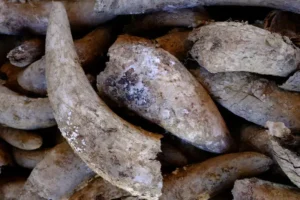What is Pinot Noir?
Pinot Noir is one of the world’s most celebrated red wine grapes, known for its elegance, complexity, and ability to express terroir. It originated in Burgundy, France, where it still produces some of the most prestigious and age-worthy wines on earth, particularly in regions like the Côte de Nuits. The name “Pinot Noir” translates to “black pine,” a reference to the grape’s tightly clustered, pinecone-shaped bunches.
Despite being notoriously difficult to grow – it’s thin-skinned, sensitive to climate, and prone to disease, Pinot Noir has captured the hearts of winemakers and drinkers alike. Its reputation for producing wines of finesse, nuance, and subtlety has made it a benchmark for elegance in red wine.
Today, Pinot Noir is cultivated across the globe, from Burgundy and Champagne to California, Oregon, New Zealand, Germany, and beyond. Its adaptability to different climates and soils has given rise to a wide spectrum of styles, but it always retains its characteristic delicacy and charm.
What does Pinot Noir taste like?
Pinot Noir is admired for its elegance and complexity rather than sheer power. It’s typically light to medium-bodied, with high acidity, low tannins, and a silky texture that makes it one of the most drinkable red wines.
At its core, Pinot Noir offers bright red fruit flavours such as cherry, raspberry, strawberry, and cranberry. These are often layered with subtle floral notes like violet or rose. As the wine ages or when grown in specific soils, it develops more earthy and savoury characteristics – think mushrooms, truffle, forest floor, or dried herbs, which are highly prized by Pinot lovers.
Texturally, Pinot Noir is smooth and silky, with tannins that are soft rather than grippy. This makes it one of the most versatile red wines for food pairing, as it doesn’t overpower dishes but instead complements and enhances their flavours.
Climate influence
Climate has a huge impact on Pinot Noir’s flavour profile:
- Cool-climate Pinot Noir (like Burgundy, Germany, or Oregon) is usually lighter, with tart red fruits, high acidity, and herbal or mineral undertones.
- Warm-climate Pinot Noir (like California or parts of Chile) tends to be riper and fuller, showing darker fruit flavours such as black cherry, plum, or cola, often with hints of spice.
Oak influence
Oak ageing also influences the taste. Many Pinot Noirs are aged in French oak, which can add subtle notes of vanilla, clove, toast, or smoke without overwhelming the delicate fruit. In some New World styles, oak is used more generously, giving bolder spice and richness.
In short, Pinot Noir’s taste ranges from fresh, fruity, and delicate to savoury, earthy, and complex, depending on where it’s grown and how it’s made – but it always retains a certain elegance that has made it one of the world’s most loved wines.
Pinot Noir Flavour Profile
- Body: Light to medium
- Acidity: Medium to high
- Tannins: Low to medium, fine-grained
- Sweetness: Dry
- Fruit flavours: Cherry, raspberry, strawberry, cranberry
- Other notes: Earth, mushroom, forest floor, rose petals, spice (especially with age)

What food goes with Pinot Noir?
Pinot Noir is one of the most food-friendly red wines thanks to its light body, bright acidity, and delicate tannins. It’s versatile enough to pair with everything from fish to poultry, vegetarian dishes, and even some comfort foods.
Poultry and game
Pinot Noir is a classic match for roast chicken – the wine’s acidity balances the richness of the meat, while its subtle earthiness complements herbs and roasted vegetables.
It also pairs beautifully with duck, especially when prepared with fruit-based sauces like cherry or orange, as the red berry notes in the wine echo the sweetness in the dish.
Game birds like quail or pheasant also shine with Pinot Noir, as the wine’s elegance highlights their savoury flavours without overwhelming them.
Meat
Pinot Noir works beautifully with lighter meats that won’t overpower its delicate structure. Think pork tenderloin, veal, or lamb chops with herbs – the wine’s acidity cuts through the richness, while its red fruit notes highlight the savoury flavours.
For beef, Pinot Noir is best suited to leaner cuts like filet mignon or carpaccio, especially when served with mushroom or peppercorn sauces that echo its earthy character.
Because of its finesse, Pinot Noir isn’t the best partner for heavily spiced or very fatty cuts, but it truly shines when paired with simply cooked meats where the flavours can mingle without clashing.
Seafood
Unlike most red wines, Pinot Noir can pair exceptionally well with certain fish. Salmon and tuna are standout examples, especially when grilled or seared, as the wine’s structure complements the richness of the fish. Pinot Noir also works with more robust seafood dishes, such as seared scallops with mushrooms or even fish stews with tomato bases, where its acidity keeps everything in balance.
Vegetarian
Pinot Noir’s earthy, savoury side makes it a natural partner for vegetarian meals. Mushroom risotto, lentil dishes, and roasted root vegetables bring out the grape’s truffle and forest floor notes.
Meanwhile, tomato-based pasta sauces or beetroot dishes highlight its bright acidity and fruitiness. For something more casual, try Pinot Noir with a vegetarian pizza topped with mushrooms, spinach, or caramelised onions.
Cheese
Creamy, soft cheeses such as Brie or Camembert shine alongside Pinot Noir, matching with the silky texture. Gruyère or Comté bring out the nuttiness of the wine, while a mild blue cheese is well balanced by the wine’s acidity.
Everyday comfort food
Because it’s so versatile, Pinot Noir also works with more casual comfort foods. A glass pairs nicely with a juicy burger, chicken pot pie, or even a simple plate of mac and cheese, where the wine’s brightness cuts through the richness. It’s a great reminder that Pinot Noir doesn’t always have to be reserved for fine dining.
Desserts
Pinot Noir can pair wonderfully with certain desserts, particularly those featuring red fruits or light chocolate. Try it with cherry clafoutis, raspberry tarts, strawberry pavlova, or dark chocolate mousse.
Where do you find Pinot Noir?
Pinot Noir thrives in cooler climates, where it has time to develop flavour complexity while maintaining freshness and acidity. While Burgundy remains its spiritual home, today you can find excellent Pinot Noir across the world, each region offering its own twist on this elegant grape.
France
Burgundy
Burgundy is the birthplace of Pinot Noir and still produces the most iconic examples. Wines from the Côte de Nuits are renowned for their structure, depth, and ability to age, while those from the Côte de Beaune often lean more towards elegance and red-fruited delicacy.
Beyond Burgundy
Pinot Noir also plays a key role in Champagne, where it adds body and richness to sparkling blends. Smaller plantings exist in Alsace, Jura, and the Loire Valley, producing lighter, fruit-driven styles.

Burgundy, France
United States
Pinot Noir found a second home in the US, particularly in California and Oregon.
California
California styles range from riper, fruit-forward wines in regions like Sonoma Coast, Russian River Valley, and Santa Barbara to more restrained, Burgundian-inspired bottles from cooler areas like Carneros.
Oregon
Oregon’s Willamette Valley has built a global reputation for elegant, structured Pinot Noir that often rivals Burgundy in finesse and complexity.
New Zealand
New Zealand has quickly risen to fame for Pinot Noir, especially in Central Otago, where wines are vibrant, fruit-forward, and silky with pure cherry and raspberry flavours. Other key regions include Martinborough and Marlborough, producing slightly more savoury, earthy styles.
Germany
Known locally as Spätburgunder, Germany’s Pinot Noir has grown in both quality and prestige. Regions like Baden, Pfalz, and the Ahr Valley craft wines with bright acidity, delicate red fruit, and a savoury, mineral-driven profile. They tend to be lighter-bodied than their New World counterparts but packed with character.

Pfalz, Germany
Other regions growing Pinot Noir
Chile
Particularly in coastal regions like Casablanca and San Antonio, Pinot Noir shows a balance of freshness and ripe fruit, with excellent value for money.
Australia
The best examples come from cooler areas such as Tasmania, Yarra Valley, and Mornington Peninsula, producing refined wines with both red fruit purity and earthy complexity.
South Africa
In cooler coastal regions like Walker Bay, Pinot Noir thrives, often showing bright red fruits and good acidity.










